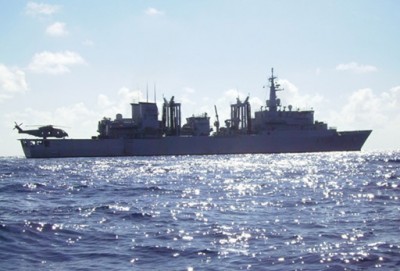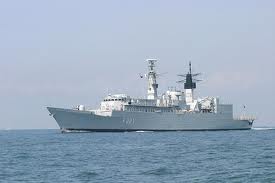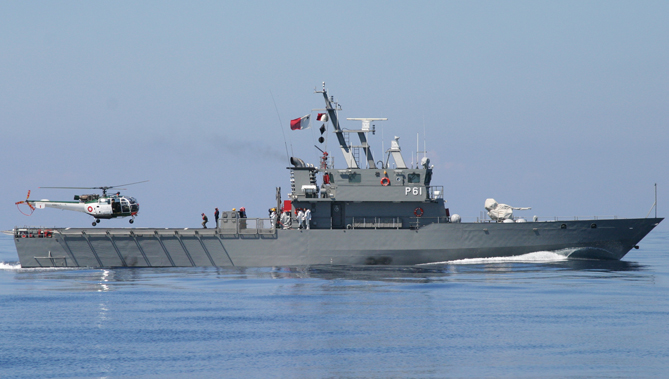Means of the arms embargo operation “Unified Protector” (Maj5)

(BRUSSELS2) NATO's operation to monitor the arms and ammunition embargo against Libya will include several maritime patrol ships and aircraft. The operation should above all be led by Italy and Turkey, which announced significant contributions during the force generation conference. On the other hand, we must not count on Germany, which has withdrawn all its forces from the Mediterranean (read: The Bundeswehr is fine, it's coming...).
The second international operation against Libya
This operation is the second of the international community after the "no fly zone" and "protection of civilians" operation carried out mainly by the Franco-British-American coalition. It only aims to enforce the arms embargo (as provided for in §13 et seq. of UN Security Council Resolution 1973).
The NATO chain of command
Named "Unified Protector", this operation will be entirely designed, supported and controlled at the level of the Atlantic Alliance. That is, with political control by NAC ambassadors and NATO's integrated chain of command. The chain of command should therefore involve Shape (with SACEUR, Admiral Stavridis at its head) such as the Allied Maritim Command in Naples (commanded by Italian Vice-Admiral Rinaldo Veri), where the headquarters of the operation, and the on-board FHQ which should be on an Italian command ship (Etna). As in any Alliance operation, however, the means remain national, and each State is free to set the rules of engagement. Just as the operation commander is free to accept his means or not with the caveats related.
Resources committed (updated March 30)
According to the last elements communicated by NATO, 18 machines should constitute the control fleet coming from 8 country: 1 command ship, 11 frigates and aircraft carriers, 4 minehunters and patrol boat, 1 auxiliary and support vessel and 2 submarines. Here is the detail of the means now official (as of March 30, 2011)
Belgium. The mine hunter SNB Narcis (M-923).
Canada. An HMCS frigate Charlottetown (FFH 339). Two Aurora CP-140 maritime surveillance aircraft, based in Sigonella (Sicily - Italy).
Spain. The frigate Mendez Nunez (F-104), based in Ferrol, the submarine Tramontana (S-74), based in Cartagena, and a CN-235 maritime surveillance aircraft.
Greece. A frigate HS Limnos (F-451) (Nb: ex Dutch ship Witte de With, F-813)
Italy. The aircraft carrier Giuseppe Garibaldi (551) - equipped with 4 vertical take-off aircraft AB 8B Harrier II -, the frigate Libeccio (F-572), the supply ship Etna (A-5326) - which will serve as flagship as it did in the EU's anti-piracy operation in the first quarter of 2010 -, the patrol Commander Bettica (P-492).

Netherlands. The mine hunter HMNLS Haarlem (M-853). This ship could be used - explained its commander Wilbert van Gemeren - also "to clear mines that Libya might use against the coalition. The Supreme Allied Commander Europe (SACEUR) specifically requested that this capability be included in the mission."
United Kingdom. A frigate HMS Cumberland (F-85) which has taken part in operations in Libya from the start, starting with operations to evacuate European nationals, in particular by making several rotations between Benghazi and Malta, as well as a minehunter, HMS Brocklesby (M33) .
Turkey. 4 frigates — TCG Gaziantep (F-491), TCG Gelibolu (F-493), TCG Yıldırım (F-243), TCG Gemlik (F-492) and one submarine — TCG Preveze (S-353).
NATO. An Awacs surveillance plane.
NB (details of the update): The frigate announced by the United States in the first list provided by NATO is not included in this final list. And it is not the Garibaldi but the Etna which will serve as flagship (it is more qualified for this task). The naming of ships supplied by Turkey has changed slightly compared to the first list of the Turkish Navy (change of names of two frigates and no supply ship). Both Romania and Bulgaria had also offered a ship — respectively the frigate "Ferdinand Regele" (F-221) with 205 men and the Drazki (former Belgian navy ship, Wandelaar F912) with 160 men - but which were not included in the list provided by NATO after the force generation conference (funding issues seemed to arise).
Read also:
Last. update: April 2

